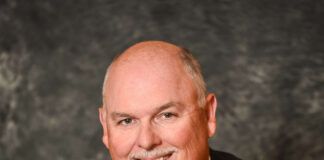He was a familiar face in New York, a man who never passed by my table without exchanging at least a few friendly words with me. He was always smiling and had many interesting stories to tell.
But I only really got to know Jay M. Galst three years ago, at one of the New York Numismatic Club’s magnificent dinners. Christoph von Mosch had brought me along and raved about the entertaining conversations that made the evening pass. He was right. To my right sat that nice man whom I knew from so many encounters without ever knowing his name. But are names needed to get lost in a conversation about coins? He told me about his enthusiasm for coins and medals featuring eyes and eye surgery. I asked if there was much to be found there at all. I just couldn’t think of a single piece. He said yes and mentioned as an example a guldiner from the city of Lucerne on which the blinding of Leodegar was depicted. Unfortunately this coin was not in his collection. He had missed it in a Swiss auction back in the day. Now it was lying in some Swiss museum. And this I knew, because I could still remember the fuss when my husband bought it for the Museum zu Allerheiligen. Some American had been bidding vigorously against him! Jay Galst and I, we both laughed. And I invited him to come and visit “his” coin in Schaffhausen one day. This visit never happened. And it will never happen.
A Renowned Ophthalmologist with Social Responsibility
Jay M. Galst is one of the more than ten thousand New York victims of COVID-19, and with him we are losing a dedicated person who has done a lot for numismatics. He was a collector who combined two passions, that of the ophthalmologist and that of the coin enthusiast.
Because Dr. Galst, who hailed from Milwaukee, was not only a numismatic expert in ophthalmology. He studied medicine at the University of Wisconsin. He graduated from the College of Physicians and Surgeons at Columbia University. For his internships he travelled to Zambia in Africa and then to New York, before opening a private ophthalmology surgery in that city in 1980.
Dr. Galst became one of the most prominent ophthalmologists in the city. As Assistant Clinical Professor of the New York Medical College, Department of Ophthalmology, he passed on his knowledge to students. He served as an Honorary Police Surgeon of the New York City Police Department. For all non-New Yorkers, this means that he voluntarily assisted police officers and their families when they suffered a serious eye injury. He was an officer of the Order of St. John, a partner organisation of the German Johanniterorden (Order of St. John), which – be it in Germany or in the USA – still plays a decisive role in providing medical care.
The Best Connoisseur of Coin Designs in Connection with Ophthalmology
Jay M. Galst was not only enthusiastic about the possibilities of modern ophthalmology. He was also interested in its history and therefore supported the Museum of Vision as a member of the board and president of the purchasing committee. He was a member of the board of directors of the Cogan Ophthalmic History Society and chaired the Ocular Heritage Society from 1989 to 1990 and 2009 to 2010.
And it was this concentrated knowledge about the eye, its treatment and the history of ophthalmology that Jay M. Galst brought to his coin collection. He acquired over 1,700 numismatic objects related to ophthalmology, which he published in a comprehensive catalogue in 2012 in collaboration with the ANS.
However, his interest was not exclusively limited to this. He also owned an extensive collection of coins of the Jewish World and modern coins and medals that dealt with the history of the State of Israel and the Jewish people.
A Central Figure of Numismatics in New York
Jay M. Galst was a man who liked people. He loved to share his passion for numismatics with others. So, of course, he was also a central figure in the New York collector scene. He held the office of president of the Bronx Coin Club and the New York Coin Club. He was also actively involved in the American Numismatic Society, the American Numismatic Association and the Royal Numismatic Society.
With him we lose a man whom Peter van Alfen described as follows: “Exceptionally good friend; generous beyond belief; a husband for 48 years; father; grandfather; co-author; ophthalmologist; numismatist; oenophile. Such a good, good man and always quick to smile.” There’s nothing left to add.
The numismatic community has suffered a serious loss. We mourn with the bereaved.




